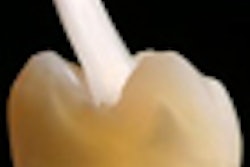Dear Restoratives Insider,
Adding a dab of chlorhexidine to a tooth preparation just might make your restorations last longer. And not for the reason you think. This compound, most commonly used as a disinfectant, may also preserve the tooth from attack by enzymes in surrounding fluids and within the tooth itself.
So say researchers who presented their findings at the American Association for Dental Research (AADR) meeting in Washington, DC, earlier this month. In one study, adhesive bonds were one-third stronger at the end of a year when treated this way. You can read more about this in an upcoming issue of the Open Dentistry Journal, but we're offering you the lowdown in advance -- as well as step-by-step advice on how to use the technique -- in our Insider Exclusive.
Touching on another controversial AADR topic, leading restoratives experts from King's College London and the University of Texas at San Antonio suggested that many dentists are cutting too much dentin. Restorations can seal in the bacteria, halting caries in its tracks, they argued in a lively seminar. Read the story here.
Also at the AADR meeting, researchers from 3M ESPE presented data suggesting you could use one adhesive in both etch-and-rinse and self-etch systems. It sounds like the perfect solution for doctors who like to use different approaches for different cases. But at least one skeptic argued that you should stick with the older systems. Click here to read more.
While researchers were presenting these findings, a controversy swirled around the use of Sargenti paste. Why do some dentists continue using it for endodontic obturation, despite the objections of the ADA, the U.S. Food and Drug Administration, and the American Association of Endodontists? To find out, click here.
Anesthesia has figured prominently in our recent restoratives coverage as well. Several companies are offering devices that vibrate injection sites, which they claim will reduce the pain. The story is here.
Of course, what's in the needle matters, too. So we were intrigued by the possibility that buprenorphine could provide long-term pain relief more powerful than morphine -- but without addicting patients. To know more, click here.
Implants also found their way into our headlines. Specifically, we reported on the work of Harvard University Professor Rainier Urdaneta, D.M.D., who thinks short implants have not received nearly the attention they deserve. Click here to find out more.
But not everyone can afford an implant -- or other major restorative work. At the Chicago Dental Society Midwinter Meeting, a panel chaired by Gordon Christensen, D.D.S., Ph.D., entertained the notion that dental costs have gotten out of hand. That story is here.
And that's not all. As always, you can get a lot of other news about the fast-changing world of restorative dentistry by visiting our Restoratives Community regularly.



















